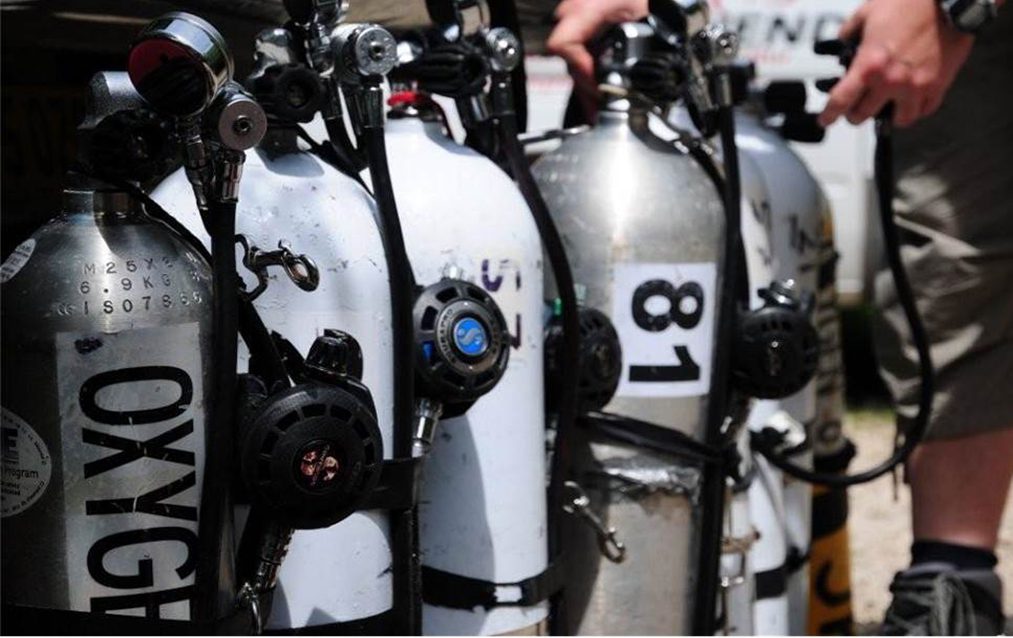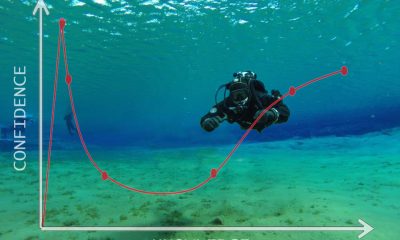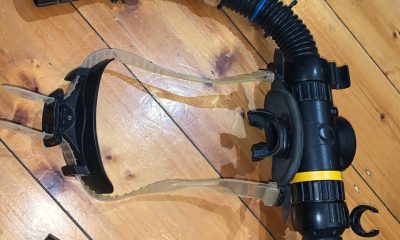Education
Maintaining Unit Cohesion
If you’re going to go metric or already are, it’s time to get your units straight, explains British tech instructor Rich Walker. Don’t mix your metrics, or your metaphors!

By Rich Walker
Header photo from the GUE archives
For the past few years, I’ve seen a worrying trend when people are discussing gas management topics. It seems to be restricted to regions using the metric system, and in particular some areas of Europe.
Now it’s nothing that is going to cause harm, or be dangerous to divers in any way, but it is simply a factual error that is creeping into teaching, and even into an official scientific diving manual. I think it’s time we fixed the mistakes!
The problem relates to the units that are used when talking about the free liters of gas that are present in a scuba cylinder. For example, the amount of free gas that a 12 Liter cylinder, pressurised to 200 Bar contains can be calculated as follows:
12 Liters x 200 Bar = 2400 Liters Equation (1)

And here is the problem that has been spotted. If you multiply Liters by Bar, the resulting unit should be Bar Liters, right?
Wrong.
To understand why this is so wrong, and the correct unit is still Liters, we need to go back into physics a little. Think about how you calculate the amount of free gas that is present in a cylinder at a depth of 30 m/100 ft. We’re talking about taking the cylinder to a depth of 30 m/100 ft, and then releasing the gas. How much volume does it now occupy, (assuming it doesn’t all float away of course)? Let’s take the same cylinder as the above example. We’d make this calculation:
12 Liters x 200 Bar / 4 Bar = 600 Liters Equation (2)

Nobody could argue that the correct unit for the result here was Liters. The mistake that people are making is that, in equation (1), they’re forgetting that they are also dividing by 1 Bar, the ambient pressure at the surface. Now dividing by 1 doesn’t change the result, but the Bar unit of the “1” is important as it keeps the result dimensionally consistent, to use the mathematical terminology. If we rewrite equation (1) properly, you can see it for yourselves:
12 Litres x 200 Bar / 1 Bar = 2400 Liters Equation (3)
So there is no such thing in diving gas management as the Bar Liter. Let’s stop using it!
You can also watch the video in German.

Rich Walker learned to dive in 1991 in the English Channel and soon developed a love for wreck diving. The UK coastline has tens of thousands of wrecks to explore, from shallow to deep technical dives. He became aware of GUE in the late 1990’s as his diving progressed into the technical realm, and eventually took cave training with GUE in 2003. He began teaching for GUE in 2004. Walker is an active project diver, and is currently involved with the MARS project in Sweden, and cave exploration in Izvor Licanke, Croatia. He is also chairman and founder of Ghost Fishing UK. He is a full time technical instructor and instructor evaluator with GUE, which he delivers via his company, Wreck and Cave Ltd. He sits on the GUE Board of Advisors, and several other industry bodies.


















































